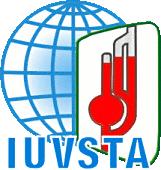Speaker
Description
InGaN/GaN quantum well (QW) structures are commonly used in LEDs and laser applications [1]. Under certain growth conditions, hexagonal V shaped pits (V pits) are formed. These V pits may enlarge during the growth and their density is connected with density of dislocations containing a screw component. These V pits have large impact on optical properties of the samples [2]. Therefore, statistical quantities concerning V pits (like density, sizes,…) are of great importance. If they are obtained, they can be correlated with luminescence properties of the sample and provide deeper insight into physics of InGaN/GaN quantum well structures.
Scanning electron microscope (SEM) is standard equipment for studying surface defects of different samples. In the case of InGaN/GaN, a common type of defects are V pits. To obtain relationship between the V pit density, sizes, etc. and properties of the samples, automatic V pit finding in the SE image is required. Automatic finding of V pits by blob detection as well as automatic fitting of cathodoluminescence (CL) spectra is carried out by CV2 library for Python. This contribution shows correlations between CL properties and V pit statistical quantities as the motivation for using Python in the image analysis.
[1] S. Nakamura et al., Appl. Phys. Lett. 62 (1993) 2390.
[2] T. Vaněk et al., J. Cryst. Growth. 565 (2021) 126151.

